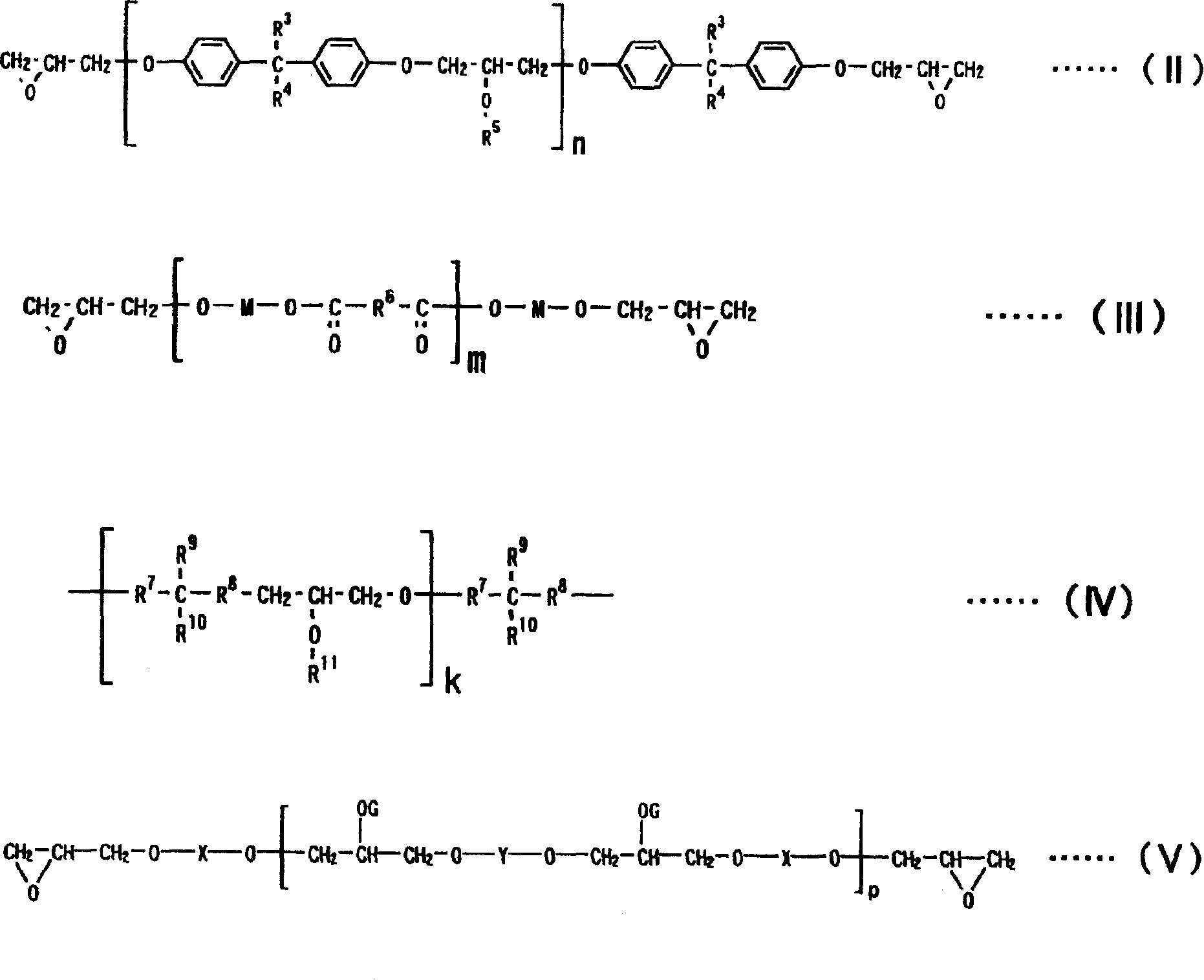Curable resin comosition and coating film thereof
A technology of curable resin and composition, applied in the direction of coating, coating non-metallic protective layer, instruments, etc., can solve the problem of difficulty in imparting flame retardancy to polyimide, poor adhesion of polyimide, and electroplating resistance. PCT-resistant solder reduces heat resistance and other problems, and achieves the effects of excellent flexibility, excellent electrical insulation, and low hydrolysis
- Summary
- Abstract
- Description
- Claims
- Application Information
AI Technical Summary
Problems solved by technology
Method used
Image
Examples
Embodiment
[0148] The following examples and comparative examples are given to describe the present invention in detail, but the present invention is of course not limited to the following examples. In addition, the following "parts" and "%" are all based on weight unless otherwise indicated.
Synthetic example 1
[0150] Synthesis Example 1 Synthesis of carboxyl-containing photosensitive resin (A-1)
[0151] Measure 210 parts of cresol novolak type epoxy resins (EPICLON N-680, Dainippon Ink Chemical Industry Co., Ltd. manufactures, epoxy equivalent=210) and 109.7 parts of carbitol acetate, in equipped with thermometer, stirrer, Heat to dissolve in the flask with dropping funnel and reflux condenser. Next, 0.1 part of hydroquinone as a polymerization inhibitor and 2.0 parts of triphenylphosphine as a reaction catalyst were added. The mixture was heated to 95-105° C., 72 parts of acrylic acid was slowly added dropwise, and reacted for about 16 hours until the acid value was 3.0 mgKOH / g or less. Cool the reaction product to 80-90°C, add 76.1 parts of tetrahydrophthalic anhydride, and react for about 6 hours until the absorption peak of the anhydride (1780cm -1 ) until it disappears. To this reaction liquid, 109.7 parts of aromatic solvent IPSOL#150 manufactured by Idemitsu Petrochemi...
Synthetic example 2
[0152] Synthesis example 2 Synthesis of carboxyl-containing photosensitive resin (A-1)
[0153] In a flask equipped with a stirring device, a condenser and a thermometer, 380 parts of bisphenol F type epoxy resin (epoxy equivalent = 950, softening point 85 ° C, average degree of polymerization n = 6.2) and 925 parts of epoxy chlorine After dissolving propane in 462.5 parts of dimethyl sulfoxide, 60.9 parts (1.5 mol) of sodium hydroxide with a purity of 98.5% was added under stirring at 70° C. for 100 minutes. After the addition, it was further reacted at 70° C. for 3 hours. After completion of the reaction, 250 parts of water were added for water washing. After the oil-water separation, under reduced pressure, distill and reclaim most of the dimethyl sulfoxide and excess unreacted epichlorohydrin from the oil layer, and contain the reaction product of residual by-product salt and dimethyl sulfoxide in 750 parts of methyl It was dissolved in isobutyl ketone, and 10 parts ...
PUM
| Property | Measurement | Unit |
|---|---|---|
| acid value | aaaaa | aaaaa |
| glass transition temperature | aaaaa | aaaaa |
| melting point | aaaaa | aaaaa |
Abstract
Description
Claims
Application Information
 Login to View More
Login to View More - R&D
- Intellectual Property
- Life Sciences
- Materials
- Tech Scout
- Unparalleled Data Quality
- Higher Quality Content
- 60% Fewer Hallucinations
Browse by: Latest US Patents, China's latest patents, Technical Efficacy Thesaurus, Application Domain, Technology Topic, Popular Technical Reports.
© 2025 PatSnap. All rights reserved.Legal|Privacy policy|Modern Slavery Act Transparency Statement|Sitemap|About US| Contact US: help@patsnap.com



